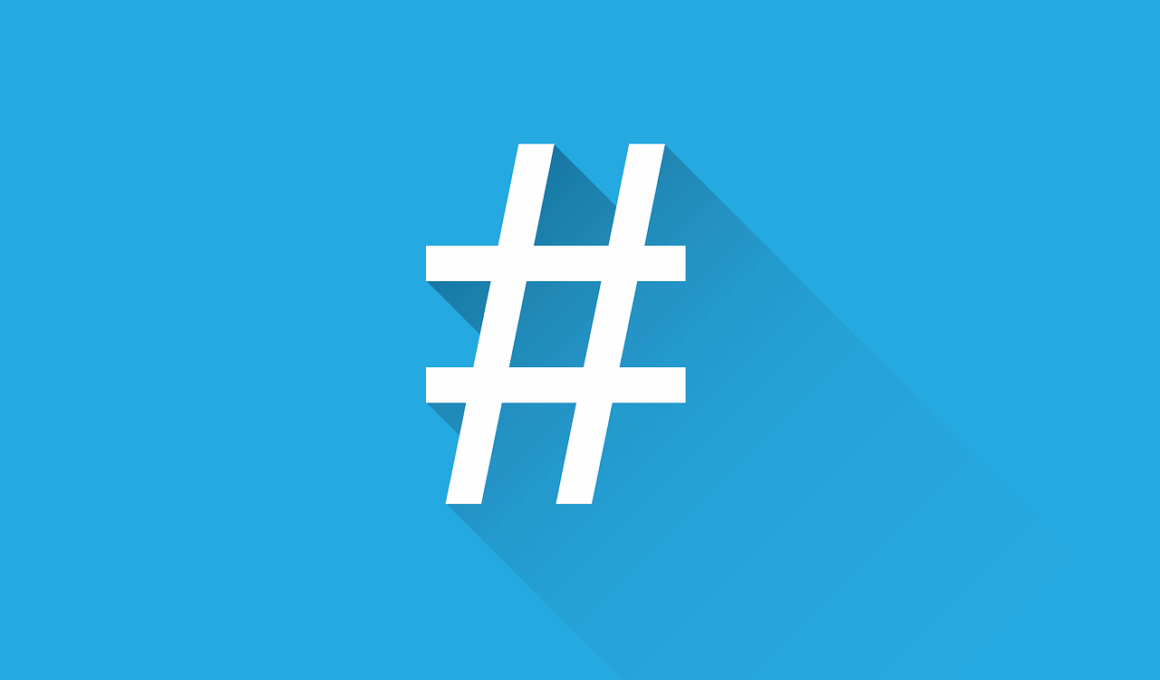Testing and Refining Your Hashtag Timing Strategy
To optimize your hashtag timing strategy, it’s essential first to determine the best time when your target audience is most active on social media. Start by analyzing engagement metrics from previous posts. Utilize tools like analytics software or built-in insights offered by platforms such as Instagram, Twitter, or Facebook. Observing peak engagement times can significantly influence the success of your posts. Additionally, consider your audience’s time zone. If you have a global audience, tailor your posting times accordingly to maximize reach. Testing different posting times can help identify trends that resonate with your followers. You may also want to experiment with different days of the week. Typically, weekdays might yield different engagement levels than weekends. To create a thorough strategy, monitor engagement following each post. Collect data consistently to evaluate performance over time. It’s also important to compare hashtag performance based on timing. Certain hashtags may perform better at particular times, while others may not resonate. Analyze and refine your strategy based on data collected to improve your social media presence.
Another vital strategy involves understanding industry trends and major events during the year. For any organization or brand, awareness about trends allows for timely posts that resonate well. Seasonal hashtags can enhance visibility and relevance, making posts more attractive to your audience. Use the insights gained to adjust your scheduling regularly. Constantly updating your strategy will ensure that you remain relevant in a dynamically shifting social landscape. Research competitors as well; identify their posting patterns and engagement levels. By understanding when they post, you can adjust your schedules accordingly to create better engagement opportunities. Regularly reassess your findings as engagement patterns may shift. As you fine-tune your approach, pay attention to external factors influencing hashtag performance. Events such as holidays could drastically affect engagement levels, so make announcements or campaigns relevant during these periods. It’s also advisable to keep an eye on trending topics and blend them with your hashtags for enhanced visibility. This won’t just increase engagement but can also lead to gaining more followers who align with your values and interests.
After gathering data, consider employing A/B testing when trying out different posting times. A/B testing involves posting similar content using different hashtags or timings to compare which strategy performs better. To execute this successfully, ensure that variables are controlled to maintain a fair comparison. For example, create two versions of the same post, but alter the timing of each post. Monitor metrics such as likes, shares, and comments meticulously for each version. A side-by-side comparison allows for insightful conclusions on which timing or hashtag usage generates more interaction. This approach helps identify specific patterns within your audience’s behavior, enabling further refinements to your strategy. Even slight adjustments to the posting time can yield substantive changes in engagement. Consider documenting your observations regularly to help track changes over time. Use spreadsheets or social media management tools for organization and clarity. Also, analyze the data collected over weeks rather than day-to-day to get a full understanding. Insights drawn over a longer period offer more substantial evidence, allowing for improved strategies moving forward.
Leveraging Insights and Analytics
Engagement statistics acquired should be utilized as a foundation for making informed decisions. Delving into analyses can unveil insights that influence when and how to use specific hashtags effectively. For instance, dissecting peak times or days shows when followers engage the most with your content. Attention to demographic details—such as age group and location—can also influence your timing, enabling you to tailor posts specific to your audience’s needs. Combine this data with seasonality trends discussed previously to enhance effectiveness further. Engage your audience through surveys or questions to understand their preferred posting times. Establishing real-time feedback systems will lead to more tailored content in alignment with your follower’s preferences. Combine both qualitative and quantitative insights to develop a comprehensive approach to your posting strategy. Integrating user-generated content can also reflect audience preferences effectively, allowing for more genuine engagement. Once you have compiled adequate feedback and data, continually refine your strategy based on this information. Remember, even the most successful businesses consistently iterate their strategies based on shifting audience preferences and market dynamics, emphasizing the importance of adaptability.
When creating a successful hashtag strategy, consistency is key. Regularly posting at identified peak times will keep your audience engaged and anticipating content. An organized content calendar can simplify maintaining consistency, ensuring you never missed engaging with your audience. Moreover, scheduling posts at optimal times, utilizing tools like Hootsuite or Buffer, can automate your strategy. This way, you can focus more on content creation and audience interaction rather than timing each post manually. Analyze overall engagement weekly or bi-weekly to stay updated on your audience’s preferences. Make adjustments based on the metrics gathered, gradually refining your posting strategy. This ensures your approach remains effective as audience dynamics change. Additionally, remember to engage with your audience directly after posting. Responding to comments or messages can enhance your relationship with followers, making them more likely to interact with future posts. Lastly, consider collaborating with influencers reflecting similar values or attributes. Their audiences represent potential new followers excited about your presence. Regularly communicating and engaging with your followers helps you stay relevant in your niche, turning casual followers into dedicated fans.
Continuous Improvement
Finally, continuous learning is paramount in testing and refining your hashtag timing strategy. Staying updated with social media trends is vital as platforms evolve. This includes keeping tabs on algorithm changes that could affect post visibility. Join industry-related groups and forums or subscribe to newsletters to yield information related to social media strategy. Learning doesn’t stop at gathering analytics and tools; leveraging knowledge from other experts can bring new perspectives to your strategy. Engage in conversations or attend webinars discussing effective strategies; learning from case studies can offer ideas applicable to your approach. Collaboration could also lead to a mutually beneficial relationship with other brands looking to refine their strategies, providing additional insights. As social media remains a fast-paced environment, adaptability is a crucial factor contributing to sustained success. Periodic analysis of follower feedback may yield insights on desired content, opening avenues for refined timing strategies. Always be open to adapt your strategy based on macro industry changes or minor shifts in your audience’s preferences. In this way, you ensure your content remains pertinent and engaging consistently.
Ultimately, a successful hashtag timing strategy is not a one-time solution. It consistently evolves according to audience demographics, engagement metrics, and changing trends. Distinguishing patterns through data analysis requires a thoughtful approach and commitment to staying informed. Utilize all available resources effectively, from tools and analytics to industry insights and audience feedback. The objective remains the same—to foster engagement and build a loyal community around your brand. Social media timelines are dynamic, creating a need for regular testing and refinement in your strategies. Allow space for creativity; sometimes unplanned posts can generate significant engagement. Balancing scheduled posts with spontaneous content can invigorate your strategy. The interaction creates buzz, leading to increased organic reach. Explore the impact of different content types, such as images, videos, or even live sessions, on engagement linked to hashtag timing. Prioritize understanding your audience while continually evaluating the effectiveness of your strategies over time. Doing so ensures that your presence remains strong among competitors and resonates well with the audience you aim to engage with now and in the future.


